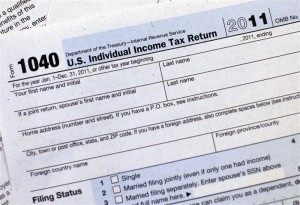By Richard Lachmann, Valdai Club
President Trump and the Republican controlled Congress ended 2017 with their first legislative achievement: tax cuts totaling $1.5 trillion over the next ten years. However, that amount masks the magnitude of the bill. In fact, there are $6 trillion of tax cuts, with $4.5 trillion made up through tax increases. Thus, the bill mainly is a redistribution of the tax burden from some Americans to others.
Who benefits and who loses? The biggest beneficiaries are the richest 1% of Americans, who get two-thirds of the tax cuts. The rich benefit in part directly by cuts in their rates and partly because they hold the bulk of shares in corporations, which have seen their tax rate, cut from 35% to 21%. Since non-Americans now own a third of shares in US corporations, they will gain more from this redistribution of taxes than will the poorest 100 million American citizens.
Tax increases have been targeted at heavily Democratic locales. The existing deduction from Federal income taxes of state and local income and property taxes has been largely eliminated. This will affect taxpayers in Democratic areas that tend to have higher incomes and higher local taxes than in Republican areas. Never before has the US tax code been shaped to punish voters from one political party. This is one more way in which Trump and the contemporary Republican Party is violating longstanding norms.
Somewhat surprisingly, the eliminated of the child income tax deduction targets large families, who tend to be both poorer than average and more likely to vote Republican. Many Republican voters, though not wealthy Republican campaign contributors will get a bad surprise when they see their taxes increase as a result of this legislation. It is hard to be certain why the Republican Congress targeted their supporters. Perhaps they assume that Republican voters so hate Democrats that they will continue to vote Republican even if they lose money due to this legislation. Perhaps, the ever more extreme politicians who now win election to Congress as Republicans really believe that poor people are undeserving and so see tax increases on the poor and middle class to benefit the rich as morally justified.
Finally, the total cost of the bill is masked by a maneuver that Bush also used for his 2001 tax cut. Many of the tax cuts expire in ten years, making it appear that the bill will not add to the Federal deficit after ten years. This was done to game the budget rules under which the US Senate operates and in that way allowed the legislation to pass without needing any votes from Democrats. Ten years after the Bush tax legislation passed, Obama was president and most of the cuts for the rich expired. By the end of Obama’s presidency the rich were paying substantially higher taxes than they had been under either Clinton or Bush, producing a real if modest redistribution of income in the US. Of course, we don’t know which party will control the presidency or Congress in 2027, so we can’t predict whose taxes will rise or fall then.
Tax legislation always is a political statement, and we can read the landscape of political power in the America of 2017 from this bill. Clearly, the Trump presidency and the Republican Party are devoted to making the rich richer at the expense of everyone else. Corporations, which gained little from the Bush tax cuts, which were geared almost entirely toward reducing the top rates for the rich, are the biggest beneficiaries of this legislation. In one sense, that switch doesn’t matter. The rich benefit just as much from corporate tax cuts as they do from individual tax cuts. Indeed, as the American rich increasingly become passive rentiers rather than recipients of large pay checks as business executives or highly skilled professionals, they gain as much if not more from corporate tax cuts that boost the value of their stock portfolios as from cuts in their individual income tax bills.
This tax bill, like almost all others, contains myriad special provisions that will reduce tax obligations for particular industries and in some cases individual firms. Those provisions are the result of rich people and corporations’ long-term investment in campaign contributions and lobbyists. Smart capitalists know that they need to support politicians financially year after year without demanding specific payoffs each time. The contributions buy access so that when opportunities appear, like this once in a decade (at best) tax cut legislation, they then can get favorable provisions put into the bill. Rich people usually don’t do the asking themselves. Rather, they employ lobbyists who sit in Washington day after day, year after year, ready for moments when they can present requests for legislative or regulatory changes that will enrich their clients. Legislators of course know who contributes money to their campaigns, and which contributors each lobbyist represents.
This tax legislation is a political gamble for the Republicans. They assume they will never win the votes of people in high tax states who will be greatly harmed by the end of deductions for state and local taxes. They hope poorer people who end up paying more will continue to vote Republican for other reasons, or will be so disengaged or confused that they will never figure out that their higher tax bills are the result of this Republican legislation. Above all, the Republicans expect that rich people, who will save enormous amounts on taxes, will be grateful and shower Republican candidates with ever-larger campaign contributions.
All these expectations are plausible, and the Republican legislators who wrote this bill are shrewd and experienced politicians. Based on the past they have good reason to expect they can continue to win elections despite this bill. More accurately, if they lose future elections it will be for reasons other than this tax bill. Voters care much more about the overall economy, and specifically whether their total income rises or falls, than they do about their tax bill. Voters have many reasons to be angry with or scared and disgusted about, Trump, and those feelings will motivate their support for Democrats much more than this tax bill.
In any case, these tax cuts create a new political reality. Deficits will increase as tax revenues decline. Once the Democrats are back in power they will have to either increase taxes or cut social programs to make up for the lost revenue. Thus, Democrats will have a political choice. They can take the path Bill Clinton took under similar circumstances in the 1990: modestly increase taxes on the rich and cut social programs and general government spending massively. Alternately, the Democrats could move to the left by revoking all the tax cuts benefitting the rich. Since almost all the cuts have gone to the rich and corporations, a tax increase targeted at the top would recover most of the revenue. The Democrats could even go further and raise the top income and corporate tax rates substantially. This would be popular, would target Republican supporters, and provide the resources for expanded social programs that in fact enjoy widespread popularity among both Democratic and Republican voters. The ongoing debate within the Democratic Party is in large part about which of these directions to take.



















